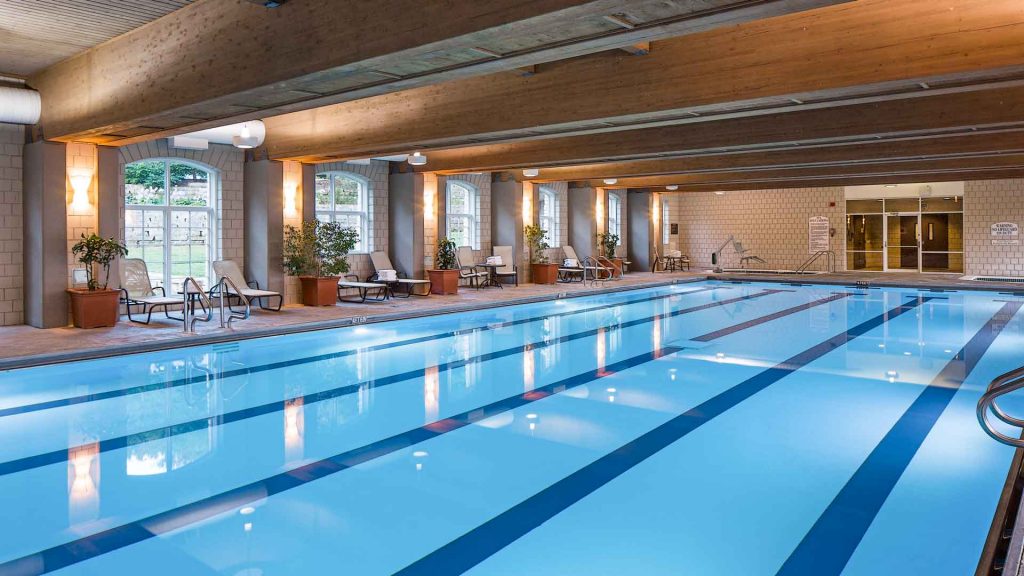A Comparison Between Indoor vs Outdoor Pools
Pools are beautiful, fun, and give your home a luxurious appearance. If you live in South Florida, you are used to outdoor pools, but what most people don’t realize, is that you can have pools installed both inside or outside, depending on your space and needs. When deciding if you are going to have an indoor or outdoor pool, however, there are many options to consider. We will outline the differences between these two types of pools below so you can make a more informed decision about which one is right for you if you are considering building a new pool in your home right now.

Appearance
Both indoor and outdoor pools have options when it comes to shape, size, and style. Because outdoor pools are more visible, they tend to be slightly more decorative, featuring waterfall options or decorative decks. An outdoor pool is more likely to have choices that complement your landscaping and architecture.
Indoor pools are usually less decorative, meant more for function than appearance. They may be more streamlined and are less likely to have unusual shapes. And while you can add decorative features to an indoor pool, you may find that the options are fewer.
It is not uncommon to see indoor pools that have the long shape, and that’s all, mostly due to space constraints.
Installation
Indoor pools can be more expensive to build, particularly if you do not already have an enclosure ready. Even in areas where a space already exists, breaking through the existing foundation to dig the pool dramatically increases labor and installation costs. Leveling and draining an indoor area may also add time and expense to the project, depending on the location. In addition, an indoor pool requires vapor barriers 1 for surrounding areas to prevent leaks and damage as well as ventilation if you choose to use a chlorine 2 system.
Outdoor pools are available as above-ground and in-ground models. Above-ground pools are easily assembled on site from a kit and generally take up less space. In-ground pools are, however, more technical to install, requiring digging, shoring, and pouring of concrete followed by installing the liner 3. Decks, fencing, gates, leveling, and drainage are also considerations to make with an outdoor pool.
Costs
In general, indoor pools are more expensive to build than outdoor pools. In addition to the line, pump 4, cover, and filtration system, you also need to take into account the labor of drilling through an existing foundation, dehumidifiers, vapor barriers 1, heaters, and ventilation. When adding the pool as an addition, you also have framing and finishing costs. For an indoor swimming pool measuring 12 x 24 feet, the average cost of installation is around $30,000.
For an outdoor pool, the biggest costs are in clearing and preparing of the site. Digging, leveling, pouring the concrete, fencing, and finishing the area as well as the decking is also necessary. Outdoor pools also require the same filters, heaters, and pumps as indoor pools.
A basic outdoor pool with the same dimensions, 12 x 24 feet, has an average cost of $16,700. This assumes that both pools are equipped with similar features, such as pumps, heaters, and filters.
Maintenance
Outdoor pools are exposed to the elements, so without a cover, debris, leaves, and even small animals can get into the pool. Therefore, an outdoor pool needs to be cleaned more regularly to remove these items. However, because the pool is outside, no ventilation is necessary.
Indoor pools are not subject to the same level of maintenance because they are not exposed to the elements. They require ventilation, however, to keep dangerous levels of chlorine gas from building up inside the area.
Sun Exposure
Sun exposure contributes to the growth of algae in pool water, which is a big problem during the off-season months and when you do not chlorinate properly. Indoor pools are not exposed to sunlight, so there is no need to worry about algae growth.
Odors
Pools that use chlorine to disinfect release chlorine gas into the air. This gas has a particular odor that has been linked to health issues such as migraines and asthma.
Outdoor pools easily dissipate the chlorine into the air, eliminating strong odors. However, indoor pools require adequate ventilation systems to allow the free flow of fresh air, which raises costs and maintenance for the pool.
Weather Dependence
Unless you live in an area that has good weather year round, your outdoor pool will likely only be used only during certain times of the year. And even in areas with favorable weather, a sudden rain shower or cold snap could drive you indoors and out of the pool.
Indoor pools are not weather dependent. Use them at any time of the year, day or night. For that reason, people who rely on their pool for exercise may find that the indoor pool is more beneficial.
Lightning
During thunderstorms, lightning strikes can be dangerous. In fact, the National Lightning Safety Institute recommends a conservative approach to safety. A lightning strike, with extremely high voltage and current capacity, seeks to discharge electricity, and water is, unfortunately, a good conductor. One way to mitigate this is through grounding.
Both outdoor and indoor pools need to be properly grounded. Grounding ensures that during a lightning strike, the energy is transferred to the earth, which helps prevent electric shock.
Unfortunately, even when grounded, outdoor pools still present a risk of electric shock for users during a thunderstorm. Indoor pools do not have the same risk and are safer to use.




